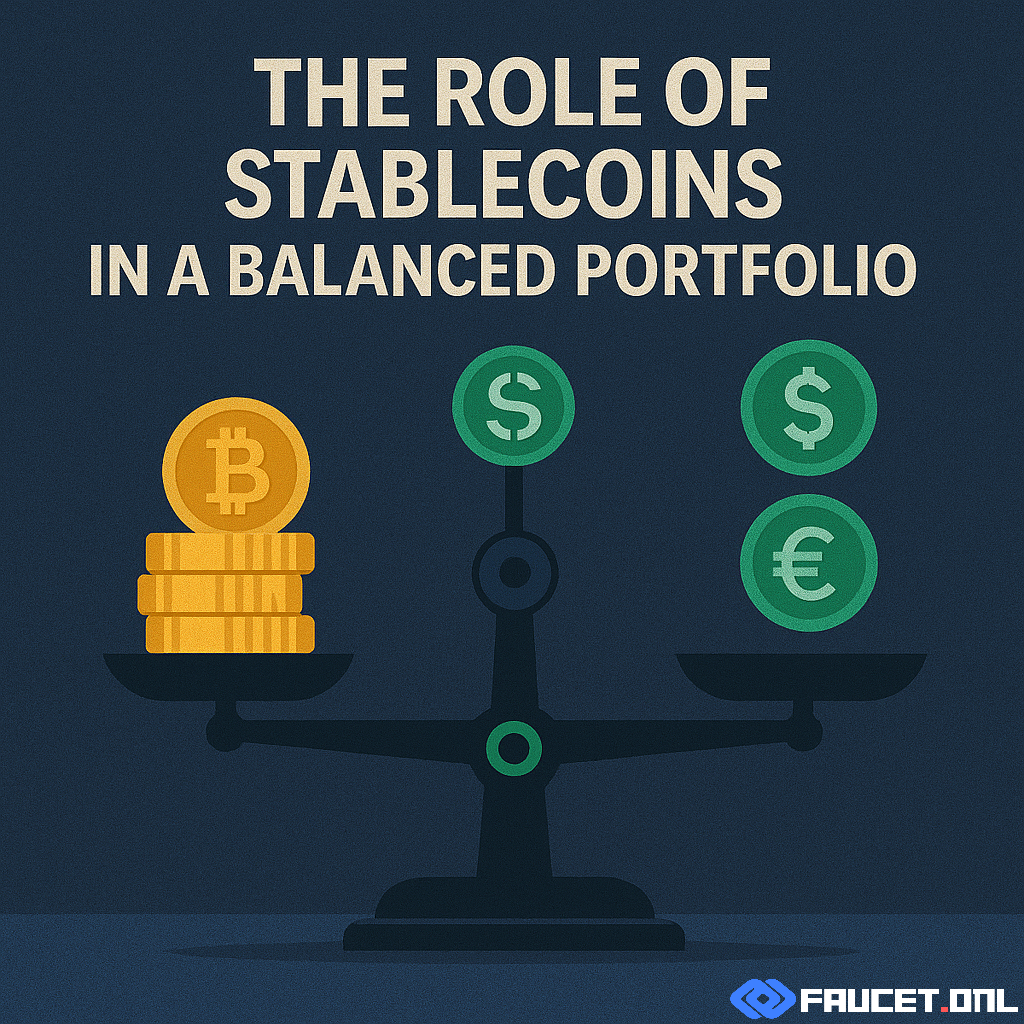Stablecoins have gained a prominent place in the world of cryptocurrency investing, providing a much-needed anchor of stability in a market known for its extreme volatility. For balanced investors, these unique digital assets play an essential role in risk management and liquidity optimization. In this article, we’ll break down what stablecoins are, examine their importance in portfolio construction, discuss the leading stablecoins on the market, address the key risks involved, and offer actionable tips for incorporating stablecoins into your investment strategy. Whether you’re seeking to reduce exposure to crypto market swings or enhance the efficiency of your portfolio, understanding stablecoins is a must.
What’s a Stablecoin?
At their core, stablecoins are cryptocurrencies designed to maintain a stable value, typically pegged to a reserve asset such as the US dollar, euro, or even gold. This stability is achieved through collateralization, algorithmic mechanisms, or a mix of both. The main types of stablecoins include:
- Fiat-collateralized stablecoins: Backed 1:1 by fiat reserves (e.g., USD) held by a trusted custodian. Examples: Tether (USDT), USD Coin (USDC).
- Crypto-collateralized stablecoins: Backed by other cryptocurrencies locked in smart contracts, typically over-collateralized to handle volatility. Example: DAI.
- Algorithmic stablecoins: Use algorithms and smart contracts to control supply and demand, keeping prices stable. Examples: Frax (FRAX), sometimes with mixed results.
Unlike typical cryptocurrencies such as Bitcoin or Ethereum, stablecoins aim to offer price consistency, making them an appealing option for both active traders and long-term investors.
The Role of Stablecoins in a Balanced Portfolio
For investors aiming for a balanced portfolio, stablecoins provide several strategic advantages:
- Risk Mitigation: During market downturns, moving volatile assets into stablecoins can help preserve capital and reduce drawdown.
- Liquidity Provision: Stablecoins act as a ready source of liquidity, enabling swift portfolio rebalancing, quick trade execution, or fast movement of funds between exchanges.
- Yield Generation: Many DeFi platforms allow investors to earn yield by lending, staking, or providing liquidity with stablecoins, often with lower risk than volatile tokens.
- Efficient On/Off Ramps: Stablecoins simplify converting crypto to fiat and vice versa, streamlining cash flow management for investors.
- Hedge Against Volatility: By allocating a portion of a portfolio to stablecoins, investors can dampen the impact of sharp market swings and maintain portfolio balance.
In essence, stablecoins function as a flexible “cash” component within a diversified crypto portfolio, making it easier to respond to market opportunities or risks as they arise.
Best Stablecoin Options for Investors
Not all stablecoins are created equal. Here are some of the leading options, each with their own pros and cons:
- Tether (USDT): The most widely used stablecoin, supported on multiple blockchains. Liquidity and acceptance are strong, but transparency concerns over reserves remain.
- USD Coin (USDC): Managed by Circle and Coinbase, known for regular audits and high transparency. Widely used in DeFi and trading.
- DAI: A decentralized, crypto-collateralized stablecoin from MakerDAO, backed by a mix of crypto assets and governed by smart contracts. Offers transparency but can be exposed to crypto market volatility.
- TrueUSD (TUSD): Fully-backed fiat stablecoin with real-time attestations, gaining popularity for its trust model.
- Pax Dollar (USDP): Regulated and fully backed, with a focus on compliance and security.
- Frax (FRAX): A partially algorithmic stablecoin blending collateralized and algorithmic models, offering flexibility but also unique risks.
When selecting stablecoins, investors should prioritize transparency, liquidity, and regulatory compliance.
Risks Associated with Stablecoins
While stablecoins offer stability, they’re not entirely risk-free. Key risks include:
- Counterparty & Custodial Risk: Centralized stablecoins rely on trusted entities to manage reserves, creating risk if those entities fail or act maliciously.
- Regulatory Risk: Stablecoins are under increasing regulatory scrutiny worldwide, which can affect accessibility, operation, or legality.
- Depegging: If a stablecoin’s backing or mechanism fails, it can lose its peg, resulting in rapid value loss. Algorithmic stablecoins have a history of depegging events (e.g., TerraUSD collapse).
- Smart Contract Risk: Decentralized stablecoins rely on code, which may have vulnerabilities exploitable by hackers.
- Liquidity Risk: Some stablecoins may have limited acceptance or thin markets, impacting your ability to exit positions swiftly.
Balanced investors should assess these risks relative to the role stablecoins play in their overall strategy.
Practical Tips for Using Stablecoins
To maximize the benefits of stablecoins while minimizing risks, keep these tips in mind:
- Diversify Your Stablecoins: Don’t keep all funds in one stablecoin—spread risk by using a mix of reputable options.
- Verify Backing and Transparency: Prioritize stablecoins with clear reserve audits, strong reputation, and regulatory oversight.
- Monitor Peg Stability: Regularly check the market price and news for any signs of instability or depegging events.
- Use Secure Wallets: Store stablecoins in wallets that offer strong security features, preferably with hardware wallet support for large holdings.
- Stay Updated on Regulations: Laws and regulations can change quickly—keep informed about the legal status of stablecoins in your region.
- Beware of High-Yield Offers: High APYs may indicate hidden risks or unsustainable platforms. Stick with reputable DeFi protocols and avoid chasing excessive returns.
Conclusion: Stability and Flexibility for Balanced Investors
Stablecoins can be a powerful tool for building and maintaining a balanced crypto portfolio. They provide a buffer against volatility, ensure liquidity, and enable yield generation with a relatively lower risk profile. However, no investment is without risk—staying informed, diversifying holdings, and following best practices will help you harness the benefits of stablecoins while protecting your capital. As the crypto space matures, stablecoins are likely to remain a vital component for any investor seeking both stability and flexibility in a dynamic market.



